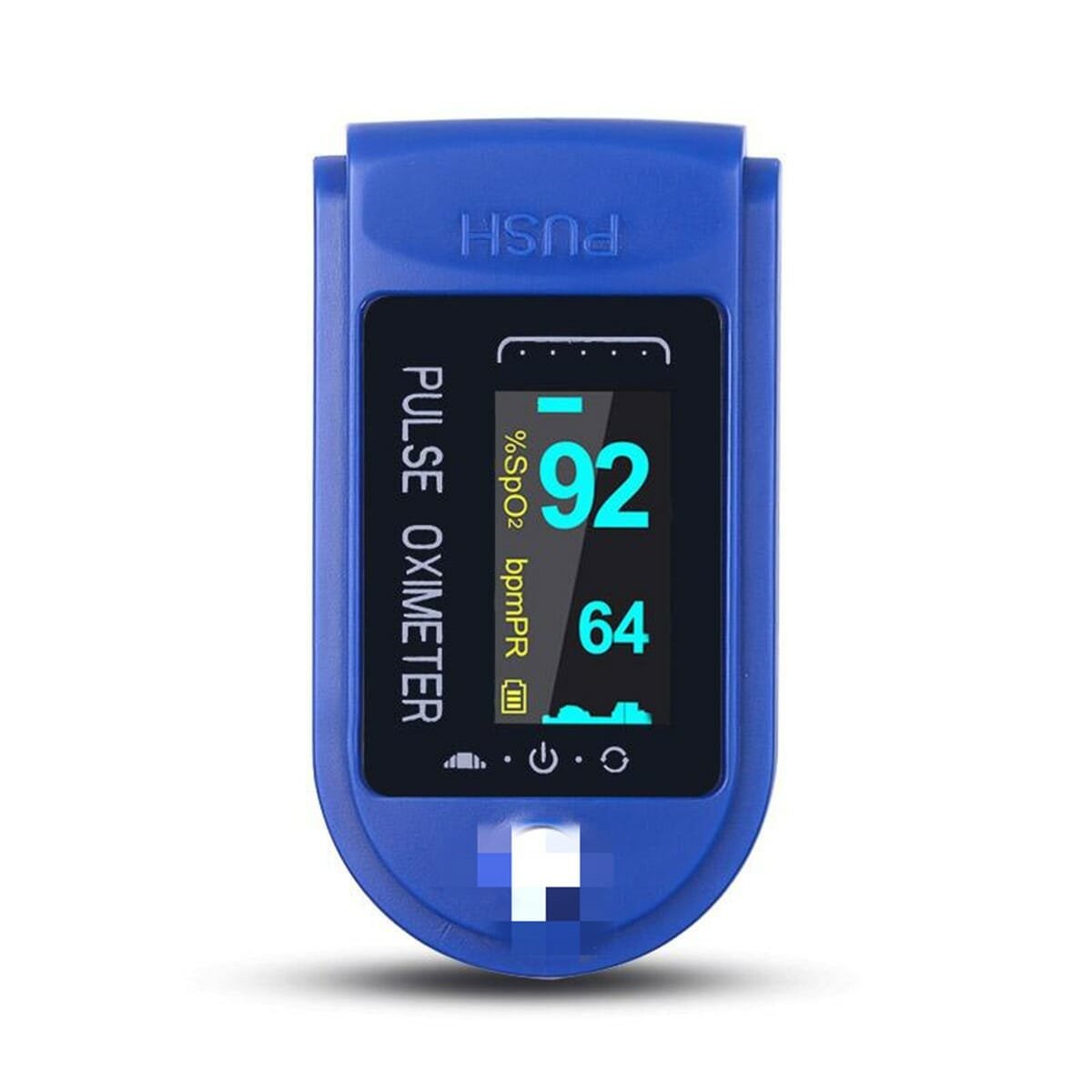
Oxygen is vital for the various body parts to carry on their functioning. But do you know how this oxygen transports to the extremities furthest from the heart, say legs and arms? So, let me tell you. Your blood acts as a transporting medium for oxygen. Hence, it’s through the blood, or the red blood cells, that oxygen pumped by your heart reaches every part of the body like the brain, legs, arms, etc. Now, your body needs to maintain a certain (normal) level of oxygen in the blood and it’s 95-100% if measured through a pulse oximeter (I’ll come to this later). If the reading is less than 95%, it’s the case of hypoxemia, a condition of lower oxygen saturation in the body that has various negative effects on the body’s tissues and organs. This is where pulse oximetry comes into the picture.
Pulse oximetry is a noninvasive test for measuring the oxygen saturation levels in your blood and utilizes a simple handheld device called a pulse oximeter.

An oximeter clips to your fingers, toes, or even the earlobe.
An oximeter, as you’ll call it normally, is a clamp-like device. As a result of its design, it simply attaches to your body parts like the earlobe, finger, or even toes to examine the oxygen-carrying capacity of your blood. Therefore, an oximeter is currently the most useful medical device in talks today amidst COVID-19 and useful in checking how much is your oxygen saturation.
Basic uses and purposes
So, does pulse oximetry solely detect the oxygen levels in your blood? No, besides its normal use, the oximetry test can also scrutinize the health of individuals for any health condition that can influence their blood oxygen levels. Some of these conditions include the following.
● Chronic Obstructive Pulmonary Disease (COPD),
● Asthma,
● Pneumonia,
● Anemia,
● Lung Cancer,
● Heart Attack,
● Congenital heart defects, etc.
Besides being casually used at home, an oximeter can also:
● Assess how well a new lung medication you’re proposed is doing,
● Check whether an individual needs aid in breathing,
● Measure oxygen levels in the blood during or after any surgery,
● Access an individual’s tolerance to increased physical activities, etc.
Therefore, the sky’s the nutshell when it comes to the purposes served by an oximeter.
Oximeter: How to use it?
Various markings on an oximeter
As I said above, the oximetry test uses a clamp-like device. So, this device (called an oximeter) attaches to either the toe, finger or even the earlobe. Upon initiation, the device uses infrared light refraction to check how well your RBCs are binding with oxygen. Following this, the oximeter returns the amount of oxygen present on its display along with your pulse rate.
This process takes some time and it’s said that the reading can either be 2% more or less than what it is. This is because of the factors like movement, temperature, or nail polish that can slightly influence the same. Therefore, don’t get excited if your oxygen level is 100%! However, it’s the pulse waveform that’s of more concern over the value. Being a painless process, you can check your blood’s oxygen levels at home also as and when required.
What is the normal blood oxygen level?
This is the most common question in the minds of many, so let’s understand this. Since we’re talking about pulse oximeters, the reading will be in terms of O2 sat (SpO2). This you can also infer on the device’s screen. Now, there can be three instances or range of readings while using the oximeter and these are:
- The normal oximeter reading lies typically between 95 and 100%.
- A pulse ox (SpO2) reading below 95% is considered low or below normal. According to experts, an oxygen level of 92 or lower can indicate hypoxemia. This is a condition that arises due to a deficiency of oxygen in the blood.
- If the reading is high enough, as in the case if you’re using supplemental oxygen, it’s the case of above normal.
The final takeaway!
An oximeter is a revolutionary device you can use in both inpatient and outpatient settings. It’s lightweight, portable, and easy to use. Within a few seconds, you can get to know how much oxygen is in your blood to access your health. However, you must be doing it right as factors like movement, temperature, or nail polish can slightly influence the same. Furthermore, as the world is in the grip of COVID-19, you might be wondering whether an oximeter can detect the virus or not, so here’s a quick explanation for that.
COVID wouldn’t always lead to a drop in your oxygen levels. That is, even if you’re infected with the virus, your oxygen levels may remain normal. However, in other cases, the oximetry test would show a consistent drop or fluctuations in the results. This again, can’t happen solely due to the infection but due to other reasons too. In a nutshell, an oximeter can’t pronounce whether you’re infected or not. A formal test is what you’d consider a priority

